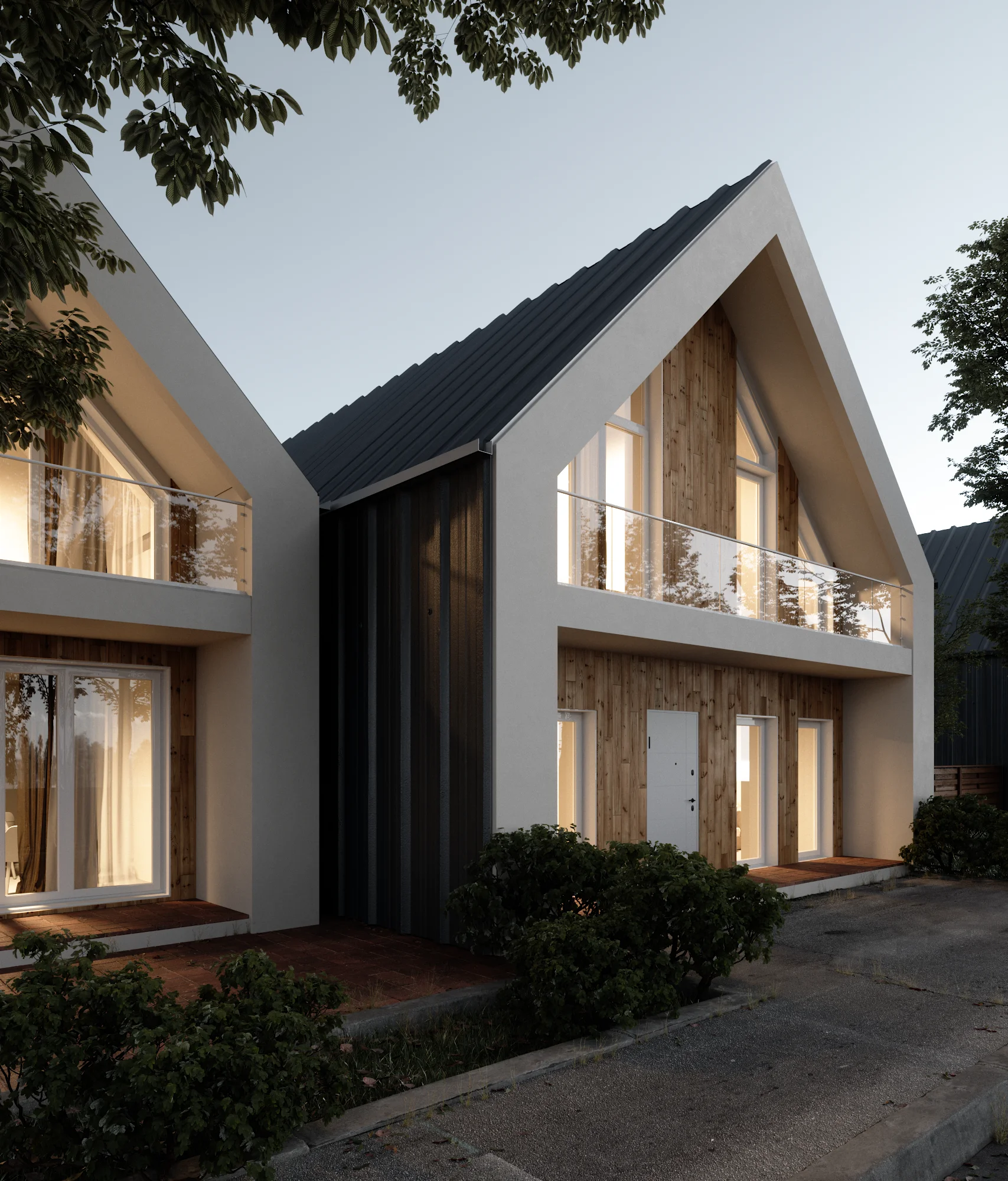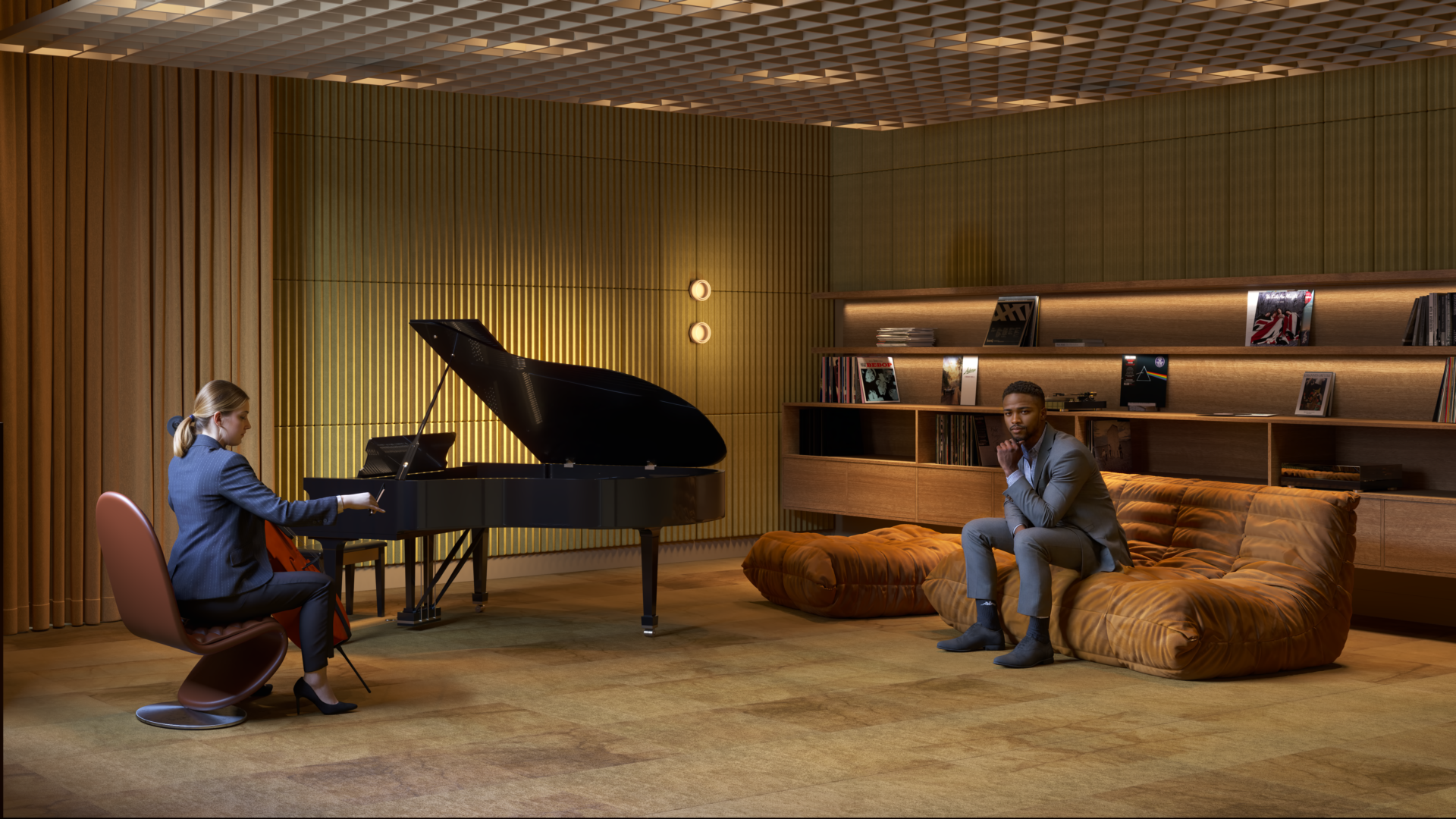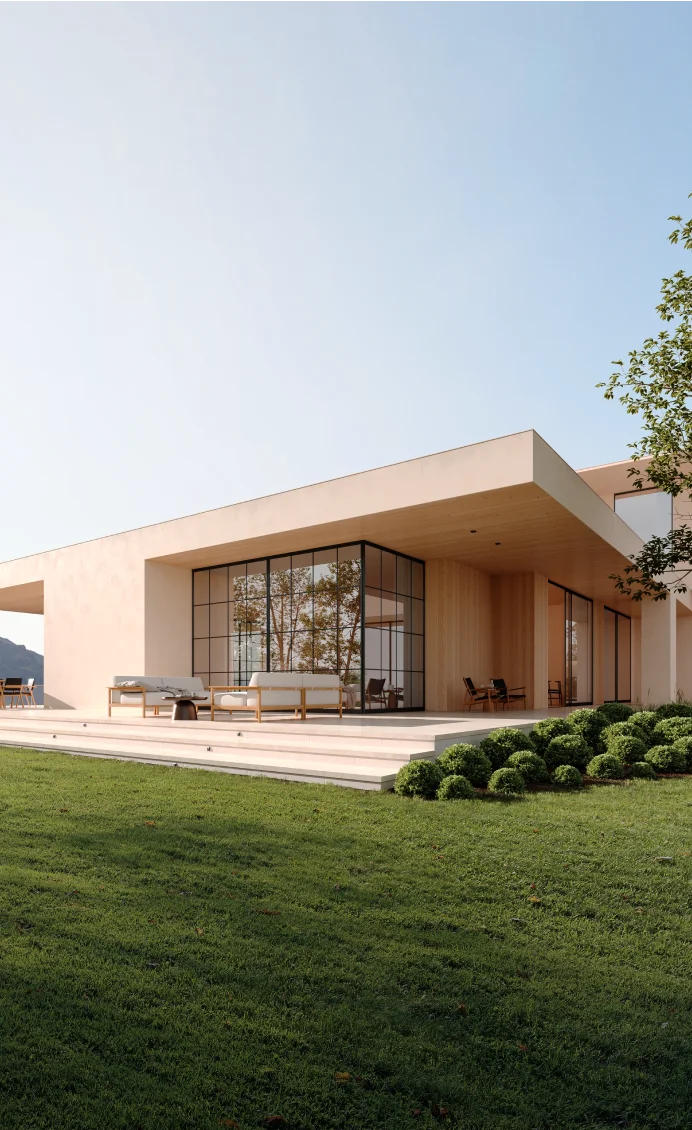A professional architecture portfolio is essential for architects to showcase their skills and attract clients. This article explores the importance of an impressive portfolio and different presentation methods available.
Architects have various options for presenting their portfolios, including websites, digital brochures, and printed versions. By combining sketches, technical drawings, 3D renders, and photos, architects can create visually appealing professional portfolios that highlight their design expertise.
Finding Your Own Style
A unique personal style in an architect’s portfolio is significant. It reflects an architect’s philosophy and approach to work, creating a cohesive brand. Clients seek a connection with an architect’s vision when viewing an architect’s portfolio case.
Architects express their style in various ways, elevating their portfolios for architecture. Some showcase a single project to demonstrate confidence, while others take unconventional approaches like sending physical portfolios. These examples highlight authenticity and leave a lasting impression.
Finding and embracing a personal style is crucial for architects in their own portfolios. It adds depth, allowing clients to connect with their vision. By creatively expressing unique styles in architect portfolios, architects stand out in the competitive field of architecture.
Making the Portfolio Easy to View
Ensuring a user-friendly format for a professional architecture portfolio is crucial, whether it’s a website, PDF, or printed brochure. The ease of viewing greatly impacts the impression it leaves on potential clients and enhances the overall experience.
In today’s digital era, optimizing the professional portfolio for mobile devices is essential. With more people accessing information on the go, architects must ensure their portfolio is easily navigable on smartphones and tablets. Responsive design that adapts to different screen sizes is vital for reaching a wider audience.
Furthermore, incorporating filter systems into the portfolio, particularly for online platforms, significantly enhances the user experience. This allows viewers to sort architecture projects based on type, style, date, or concept, saving time and providing a seamless browsing experience.
Architecture students and professionals can benefit from architectural portfolio templates and draw inspiration from the best designs. These templates provide a solid foundation for organizing and presenting their work effectively. They offer structured layouts that showcase projects and information in visually appealing ways.
Prioritizing an easy-to-view professional architecture portfolio is essential for capturing the attention of potential clients. Whether it’s a website, PDF, or printed brochure, optimizing for mobile devices and implementing filter systems streamline the viewing experience. Architecture students and professionals can utilize architectural portfolio templates and draw inspiration from top designs to create visually engaging professional portfolios.
The Role of Descriptions
Informative and concise project descriptions are essential in a professional architecture portfolio. They provide important details to help viewers understand the projects and appreciate the architect’s design approach.
Descriptions serve as a narrative, guiding viewers through the architect’s design process and concept. They highlight the main ideas, showcasing the architect’s expertise and role in the projects.
Finding a balance between text and visuals is key in professional portfolio layouts. While descriptions are important, the focus should remain on the visual presentation. Too much text can overwhelm viewers and detract from the overall impact.
Graphic design plays a crucial role in presenting descriptions within the professional portfolio. Typography, layout, and placement of text should be visually appealing and harmonize with the portfolio design.
Whether physical or digital formats, well-crafted descriptions enhance understanding and engagement with the architect’s work. Collaboration between architecture students, professionals, and graphic designers can create online portfolios that effectively showcase the design process.
Concise and informative descriptions play a vital role in an architecture portfolio. They guide viewers and highlight the architect’s expertise. Balancing text and visuals, with attention to graphic design, creates a compelling portfolio layout.
The Use of Computer-Generated Imagery (CGI)
Utilizing CGI in a professional architecture portfolio offers numerous benefits. It allows architects to showcase projects that are still in progress as if they were already completed. This helps demonstrate their vision and potential to clients.
CGI can be integrated into a professional portfolio in various ways. Architects can combine CGI with technical drawings and sketches to illustrate the design process. They can also use photorealistic CGI renders as focal points in a portfolio, capturing viewers’ attention.
Whether in digital or printed portfolios, the strategic use of CGI enhances the overall portfolio design. It elevates the visual impact and creates a professional experience for potential clients. Architecture firms can effectively leverage CGI to showcase their expertise and leave a lasting impression.
Including Technical Drawings
Including technical drawings in a professional architecture portfolio is of utmost importance. These drawings demonstrate an architect’s expertise and showcase their ability to translate design ideas into tangible plans. They provide insights into the architectural skills and attention to detail.
When selecting and presenting technical drawings, architects should consider effective presentation techniques. Clarity and legibility are crucial, ensuring that the drawings are easily understandable for viewers. Proper labeling and annotations can provide additional context and highlight key features.
In terms of presentation, architects have various options. They can create dedicated project pages within their portfolio, showcasing a selection of technical drawings for each project. Alternatively, they can include a separate section specifically for technical drawings.
When designing the portfolio, it is essential to consider the overall layout and aesthetic. Incorporating white space around the technical drawings helps draw attention to them and creates a clean and professional look. Architects can also enhance the presentation by using their own images alongside the technical drawings, providing a comprehensive view of their work.
For architecture students or professionals seeking a senior architect position, including a range of technical drawings demonstrates their competence and mastery of architectural principles. It showcases their ability to execute designs and communicate their ideas effectively.
Including technical drawings in a professional architecture portfolio is vital for showcasing architectural skills and design ideas. Architects should carefully select and present these drawings using effective presentation techniques. By incorporating technical drawings strategically within the portfolio layout, architects can demonstrate their expertise and leave a lasting impression on potential clients or employers.
Ensuring Effective Typography
Typography plays a crucial role in the presentation of an architecture portfolio. It not only enhances the overall visual appeal but also contributes to conveying the architect’s design style and sensibilities. Here are some basics of good typography and tips for choosing fonts and typefaces.
When selecting typography for a portfolio, it’s essential to consider legibility and readability. Opting for clear and easily readable fonts ensures that viewers can navigate through the professional portfolio effortlessly. Additionally, choosing fonts that align with the overall design style and theme creates a cohesive and visually appealing look.
Using a plain background can help emphasize the typography and make it stand out. It provides a clean canvas for the text, allowing the viewer to focus on the content. Moreover, paying attention to the hierarchy of typography by varying font sizes and styles helps guide viewers’ attention and organize the information effectively.
For architecture students, showcasing a range of work in their portfolio is crucial. From academic projects to creative work, including diverse examples demonstrates versatility and potential. In contrast, professionals may choose to focus on a specific project or area of expertise to showcase their mastery.
Considering the target audience is also important. If the portfolio is intended for potential clients, it’s essential to select typography that resonates with their tastes and preferences. On the other hand, if the portfolio is aimed at other professionals, choosing fonts that convey professionalism and expertise is recommended.
Effective typography is vital for a compelling architecture portfolio. It enhances the visual appeal, communicates the architect’s design style, and leaves a lasting impression on potential clients or employers. By choosing appropriate fonts, considering hierarchy and legibility, and aligning typography with the portfolio’s overall layout, architecture students and professionals can create portfolios that showcase their work effectively.
Using Various Content Formats
Incorporating diverse visual content formats, like videos and 360-degree panoramas, in an architecture portfolio offers significant advantages. These formats provide dynamic and immersive experiences, showcasing architects’ work in innovative ways.
Videos can showcase the design process through digitized hand drawings, offering insights into an architect’s skill set. 360-degree panoramas enable interactive exploration of architectural spaces, enhancing viewer engagement. Architects can utilize architectural rendering software or photography to create these panoramas.
When integrating these formats, architects should consider project-specific requirements. Videos can feature on the main page of a portfolio website, while 360-degree panoramas can enhance project pages. Adobe InDesign aids seamless integration for a cohesive portfolio layout.
Using various content formats brings portfolios to life, engaging viewers and effectively showcasing design abilities. Choosing suitable formats for each project ensures they contribute to a comprehensive understanding of the end results.
Diverse visual content formats, such as videos and 360-degree panoramas, elevate architecture portfolios. With architectural 3D modeling, photography, and creative design, architects create captivating portfolios that effectively showcase their work.
Conclusion
An effective professional architect portfolio architecture, with carefully curated the best architecture portfolio designs, holds immense significance in showcasing skills and attracting clients. Prioritizing authenticity is essential, allowing architects to communicate their best qualities to potential clients. By choosing the right 3D rendering company, utilizing CGI rendering, 3D models, and architectural visualization services like 3D exterior rendering and 3D interior rendering, architects can create stunning visuals that captivate viewers. Incorporating techniques such as 3D architectural animation and working with an experienced architectural visualizer enhances the overall professional portfolio architecture and showcases unique architecture portfolio designs. Ultimately, a professional portfolio that highlights one’s expertise and unique approach, with attention to architecture portfolio designs, will leave a lasting impression and successfully connect with clients.
FAQ:
What is the significance of a professional architecture portfolio?
A professional architecture portfolio serves as a showcase of an architect’s skills, design expertise, and unique style. It is essential for attracting new clients and making a strong impression in the architecture industry.
What are the different presentation methods for an architecture portfolio?
Architects can present their portfolios through various methods such as websites, digital brochures, and printed versions. It’s important that the chosen method highlights their designs, sketches, technical drawings, 3D renders, and photos effectively.
Why are technical drawings important in an architecture portfolio?
Technical drawings demonstrate an architect’s expertise and their ability to translate design ideas into tangible plans. They provide an insight into the architect’s skills and attention to detail.
What is the importance of typography in an architecture portfolio?
Typography enhances the visual appeal of a portfolio and helps to convey the architect’s design style and sensibilities. It should be clear and easily readable, aligning with the overall design style and theme of the portfolio.
Why should diverse visual content formats be included in an architecture portfolio?
Incorporating diverse visual content formats like videos and 360-degree panoramas provides dynamic and immersive experiences. These formats offer innovative ways to showcase architects’ work and engage viewers.














